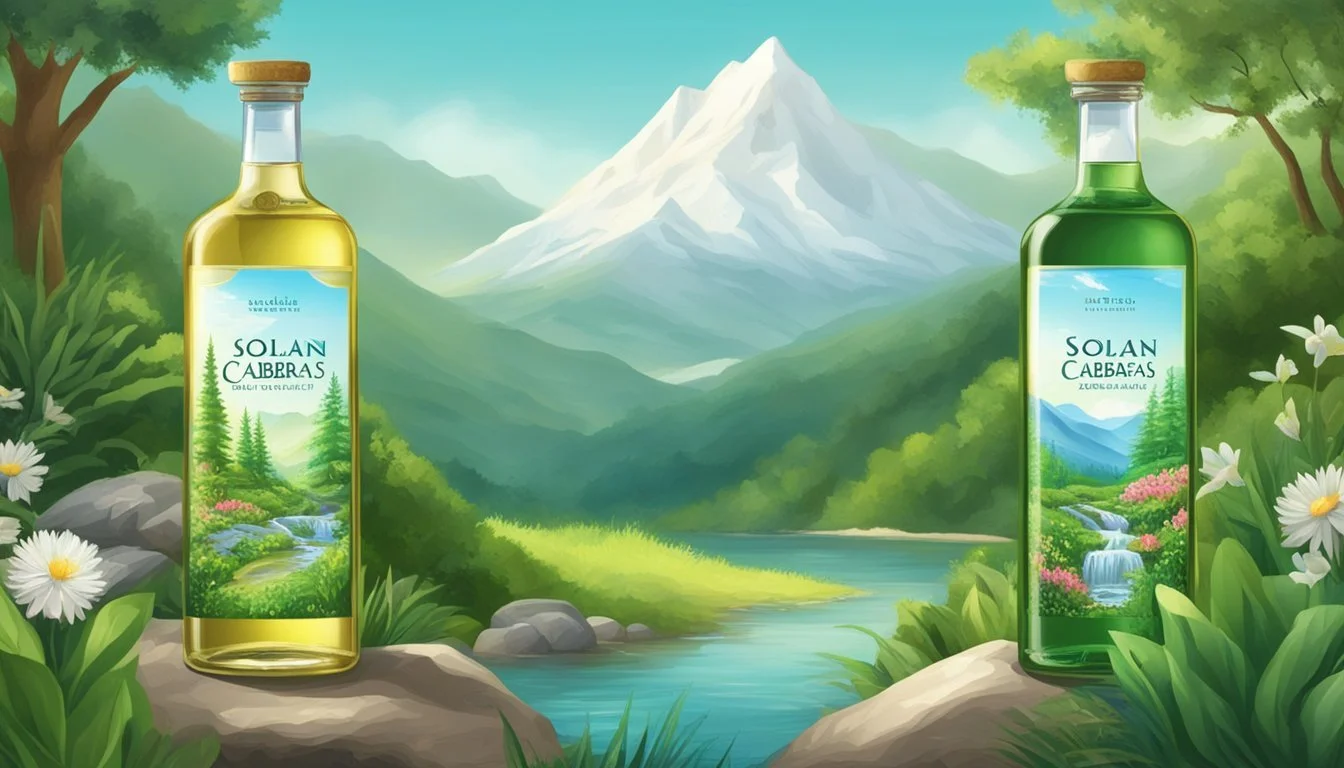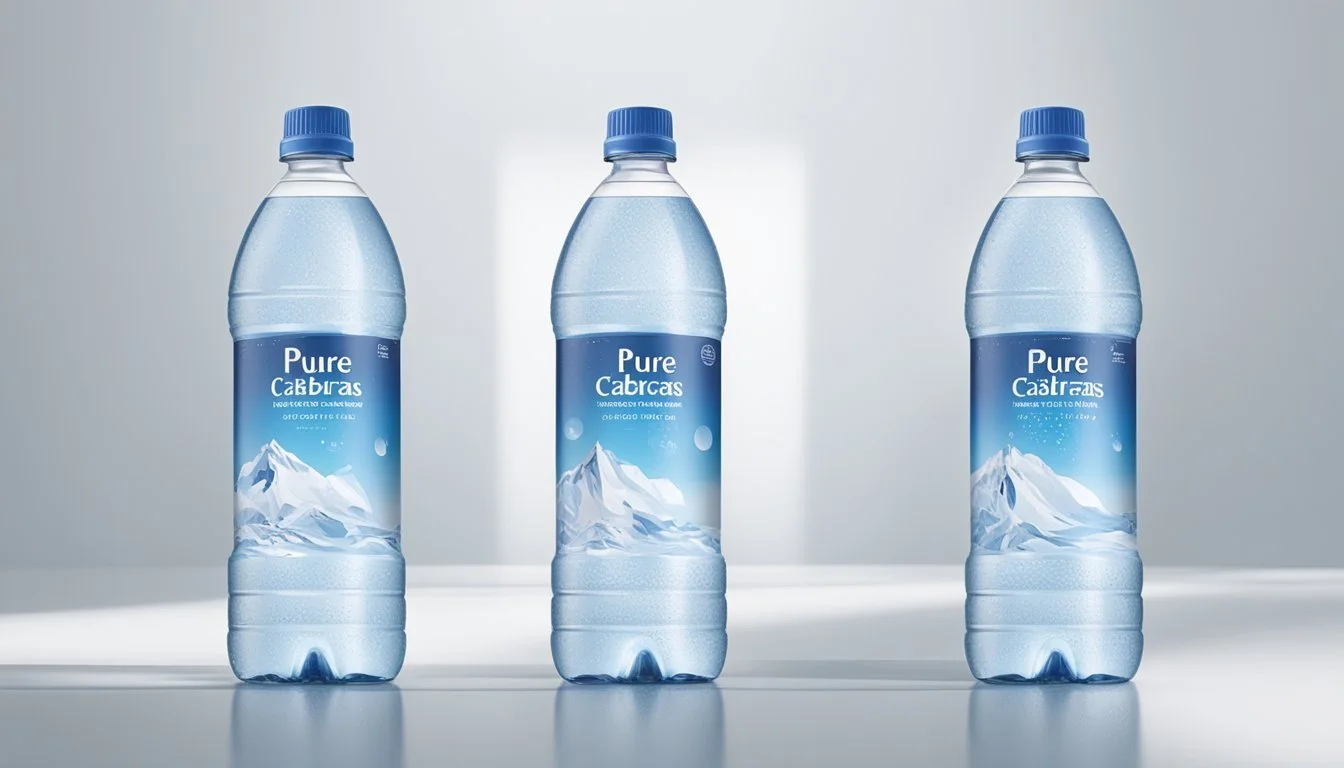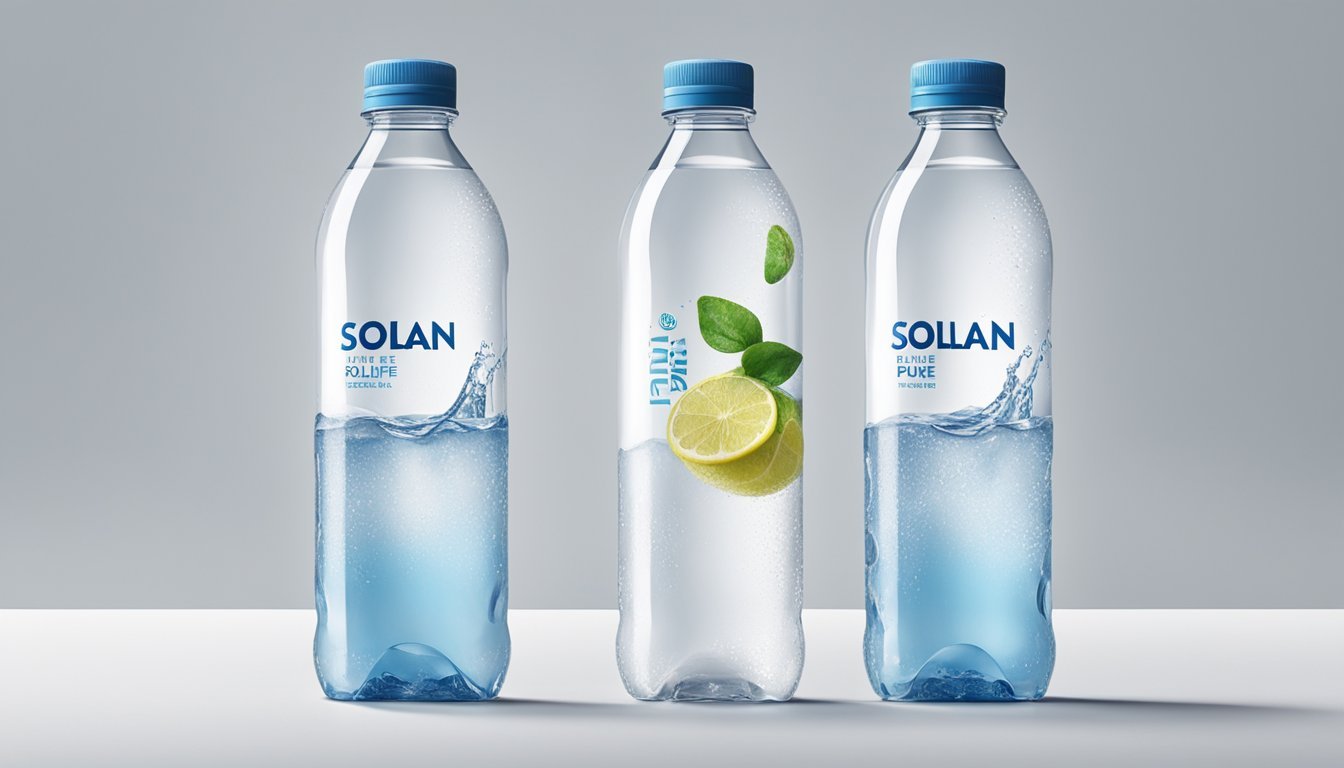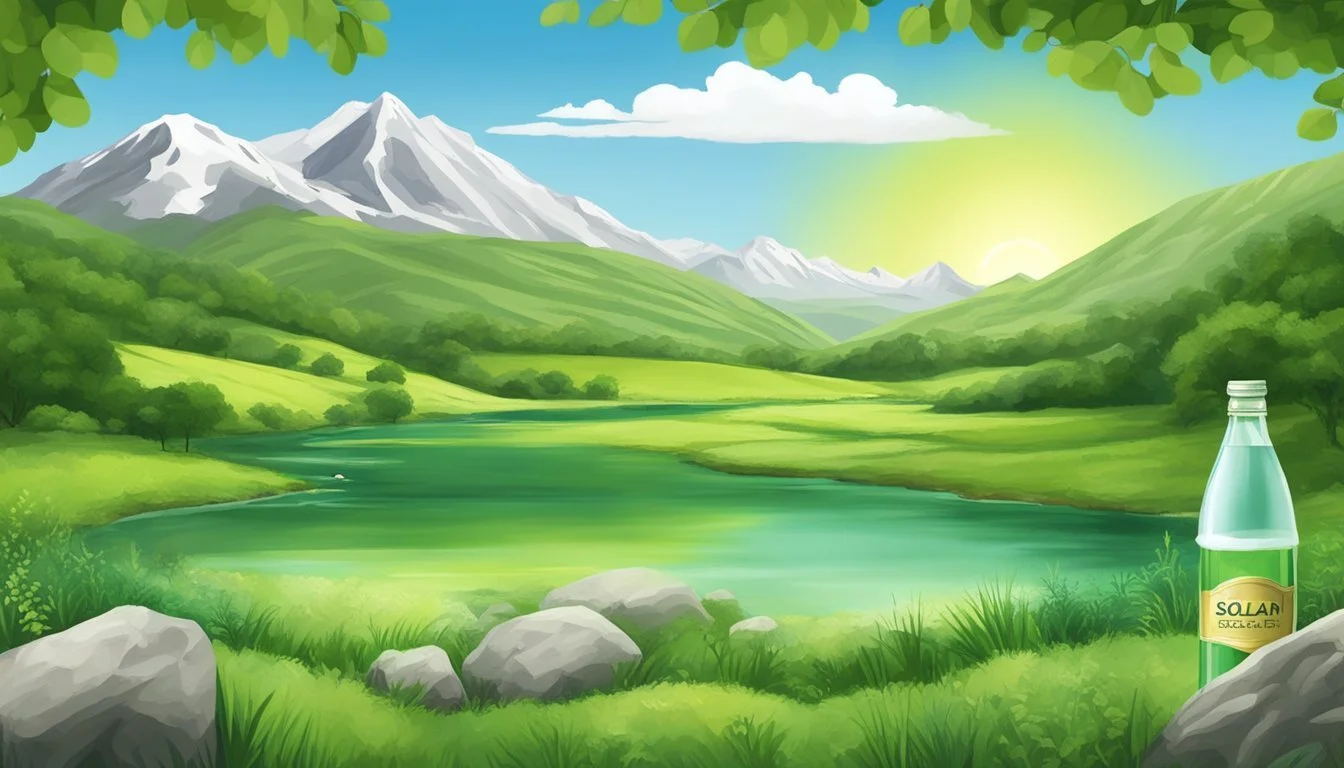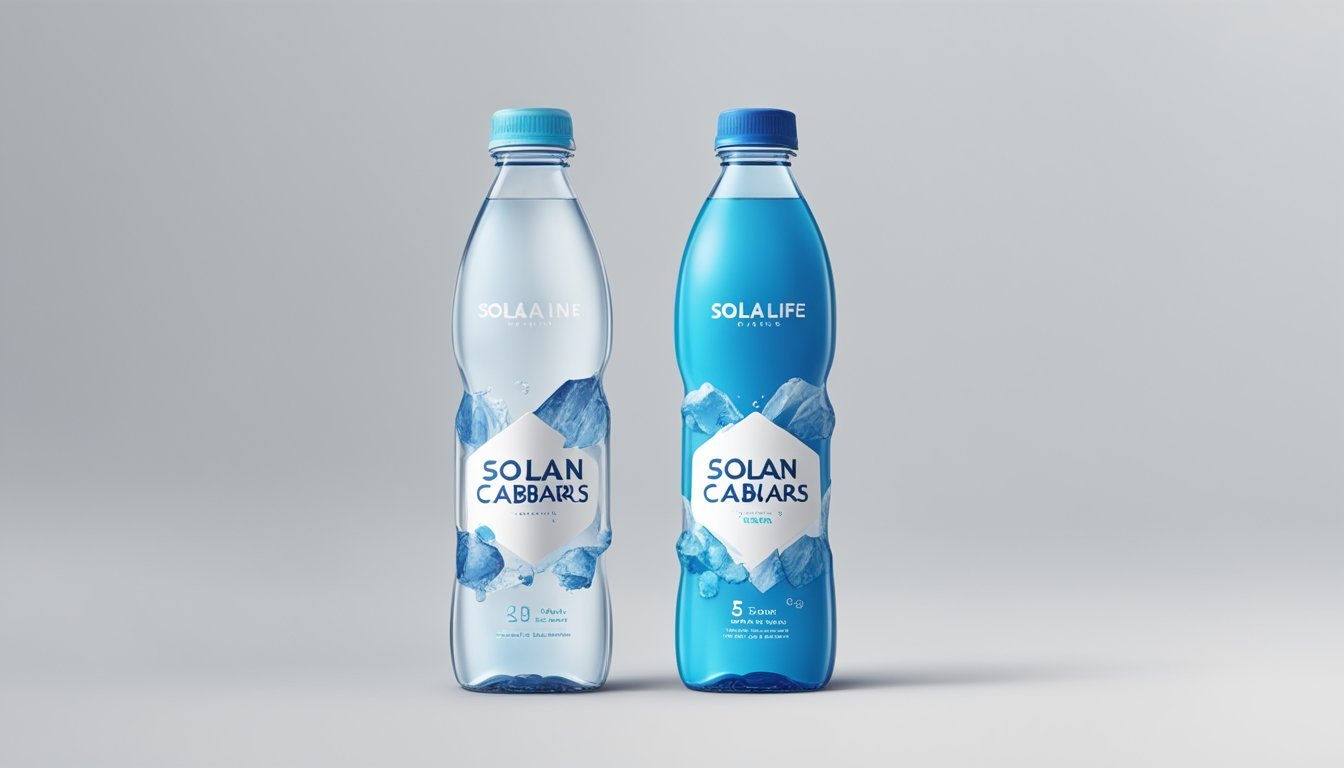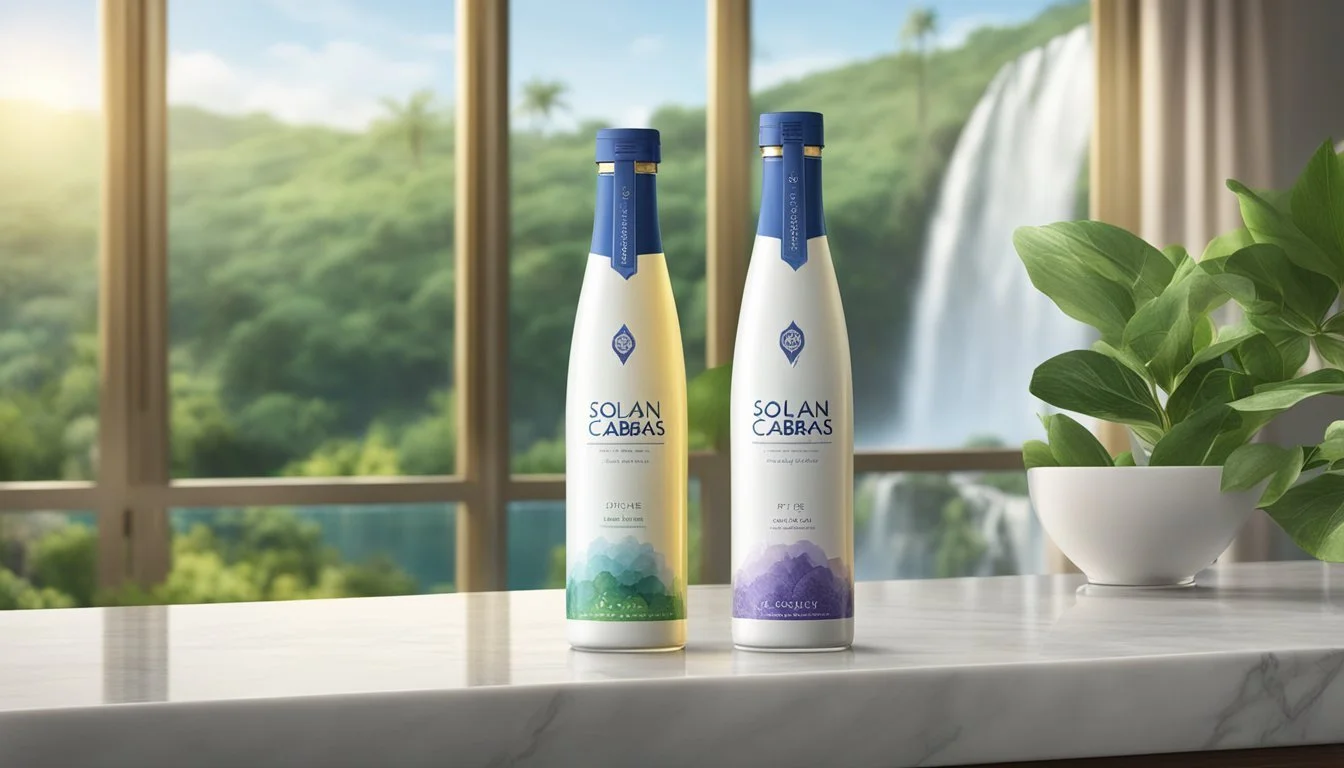Solan de Cabras vs. Pure Life
Comparing Quality and Taste
Choosing between Solán de Cabras and Pure Life means deciding between the heritage-rich mineral water from Spain and the widely available mainstream option known globally. Solán de Cabras boasts a 3,600-year history originating from the pristine springs of Serranía de Cuenca, revered for its purported healing properties and high mineral content. Its distinct taste has often been described as having a naturally cool, clay-stored flavor even at room temperature.
Pure Life, on the other hand, is a product of Nestlé, a colossal brand owning numerous water lines. It positions itself as a more accessible choice in the bottled water market. Known for its wide distribution and consistent quality, Pure Life offers straightforward hydration without the historical or mineral depth of Solán de Cabras.
For those seeking a premium water experience with a rich historical background and unique mineral composition, Solán de Cabras stands out as the better choice. Pure Life, however, remains a solid option for those prioritizing availability and reliability in their daily hydration.
The Importance of Hydration
Hydration plays a vital role in maintaining health and well-being. Water is essential for numerous body functions, such as regulating temperature, transporting nutrients, and removing waste.
Bottled water, including brands like Solán de Cabras and Pure Life, provides convenient hydration options. Both are readily available, offering a practical solution for staying hydrated, especially when on the go.
Spring water sourced from natural springs often contains a variety of minerals which can contribute to your daily nutrient intake. Solán de Cabras is an example of premium bottled water known for its purity and unique mineral composition.
Hydration supports cognitive function, muscle performance, and skin health. Adequate water intake can also help prevent dehydration, which may lead to headaches, fatigue, and impaired concentration.
Benefit Description Cognitive Enhances focus and mental clarity Muscle Improves strength and endurance Skin Promotes elasticity and vibrance
Incorporating sufficient water into one's daily routine can have lasting positive effects. It is generally recommended to drink at least eight 8-ounce glasses of water per day, though individual needs may vary.
Spring water like Solán de Cabras often comes from protected sources, ensuring a high level of purity and natural mineral content. Pure Life, another popular brand, offers purified bottled water, processed to remove impurities and enhance taste.
Choosing the right type of bottled water depends on personal preferences and specific needs. The key is to ensure consistent hydration for optimal health.
Understanding Bottled Water
Understanding bottled water involves examining the different types available and the regulations that ensure their safety and quality. These categories include various types of bottled water, each subject to strict standards.
Bottled Water Categories
Bottled water can be classified into several categories, each varying in source and treatment. Natural mineral water originates from a protected underground source and contains minerals. Spring water must be collected only from natural springs.
Purified water often comes from municipal sources but undergoes processes like distillation or reverse osmosis to remove impurities. Artesian water is sourced from confined aquifers. Each type presents unique characteristics, so consumers may choose based on preferences for taste, source, or mineral content.
Regulations and Standards
The FDA and EPA regulate bottled and tap water, respectively. Bottled water regulations cover labeling, safety, and quality. Bottled water must pass tests for contaminants like bacteria, chemicals, and metals, ensuring it meets set standards.
Labels must accurately reflect the water type and treatment. For Pure Life and other brands, these standards ensure a consistent and safe product. Tap water undergoes rigorous treatment to remain safe, but bottled options come with added convenience and portability.
Brand Overview
This section provides a detailed comparison of Solán de Cabras and Pure Life, focusing on their origins, production methods, and unique characteristics.
Solán de Cabras Profile
Solán de Cabras is a premium natural mineral water brand from Spain.
Spanning a legacy of 3,600 years, it originates from the pristine spring in Serranía de Cuenca. The water is known for its distinctive mineral composition, which includes calcium, magnesium, and bicarbonates.
The brand emphasizes sustainability, employing eco-friendly practices in its bottling process and packaging. Moreover, Solán de Cabras is celebrated for its unique blue bottle design, symbolizing purity and elegance. Its rich heritage and commitment to preserving a clean source elevate its status in the premium bottled water market.
Pure Life Profile
Pure Life, a product from Nestlé, is one of the most widely available bottled water brands globally.
Unlike Solán de Cabras, Pure Life is sourced from various aquifers and then goes through a rigorous purification process, including reverse osmosis and UV treatment. This ensures consistent quality and safety across all markets.
Nestlé’s extensive distribution network makes Pure Life accessible, but its mass production approach often garners mixed reviews regarding taste and source integrity. Despite these critiques, Pure Life maintains a strong presence due to its reliability and affordability, making it a popular choice for everyday hydration needs.
Source and Origin
Solán de Cabras and Pure Life have distinct origins that influence their characteristics and quality. Understanding where and how each is sourced helps explain the differences between these two bottled water brands.
Solán de Cabras Spring
Solán de Cabras is sourced from a natural spring in the Serranía de Cuenca mountains in Spain. Nestled within the Solán de Cabras Nature Preserve, this spring has been prized for centuries.
The water undergoes a natural filtration process through layers of quartzite and limestone. This journey imbues it with a unique mineral composition and purity.
Bottled directly at the source, Solán de Cabras water captures the pristine essence of its origin. Known for its blue glass bottles, the brand emphasizes authenticity and sustainability.
Pure Life Source
Pure Life, on the other hand, is sourced from various aquifers and municipal supplies, depending on the region. Unlike Solán de Cabras, Pure Life undergoes a rigorous purification process, including reverse osmosis, to remove impurities.
Pure Life's approach focuses on accessibility and consistency. The brand is widely distributed and aims to provide a reliable source of hydration.
The filtration process includes several stages to ensure safety and quality, but the origin of the water can vary, influencing flavor and mineral content. While not derived from a single natural spring, Pure Life prioritizes meeting regulatory standards and providing affordable bottled water.
Mineral Content Analysis
Understanding the mineral content of bottled water is crucial for determining its health benefits and suitability for different needs. This section will explore the essential minerals found in Solán de Cabras and Pure Life, along with their total dissolved solids (TDS) and overall mineral balance.
Essential Minerals in Water
Solán de Cabras water is renowned for its consistently low mineral content. It contains essential minerals such as calcium, magnesium, and potassium. The water's natural filtration process through the Serranía de Cuenca results in a balanced but low concentration of these minerals, which benefits those monitoring their mineral intake.
Pure Life bottled water, produced by Nestlé Waters, undergoes purification processes that also ensure a consistent mineral composition. This includes added minerals for taste, such as calcium and magnesium, although the exact levels may vary. Both brands offer water that supports general electrolyte balance.
TDS and Mineral Balance
Total Dissolved Solids (TDS) represent the concentration of dissolved substances, including minerals, in the water. Solán de Cabras boasts a naturally low TDS, resulting in a pure and light taste. This feature makes it suitable for individuals with kidney issues or those who prefer low-mineral water for lifestyle reasons.
In contrast, Pure Life tends to have a moderate TDS due to the added minerals and purification processes. This makes it ideal for providing a pleasant taste and maintaining essential electrolytes balance, which can be helpful for everyday hydration and general health. The difference in TDS also means each brand caters to diverse preferences and health needs.
Taste Profile Comparison
When comparing the taste profiles of Solán de Cabras and Nestlé Pure Life, distinct differences become apparent.
Solán de Cabras is known for its mineral-rich content, which gives it a slightly alkaline quality. This brand offers a unique, crisp taste that many find refreshing. The water has a velvety texture, making it feel smooth on the palate.
In contrast, Nestlé Pure Life provides a more straightforward taste. It is designed to be neutral and clean, appealing to a broad audience without strong flavor notes. Pure Life aims to be a refreshing choice that is easily drinkable for everyday hydration.
Key Differences in Flavor:
Attribute Solán de Cabras Nestlé Pure Life Taste Mineral-rich, slightly alkaline Neutral, clean Texture Velvety, smooth Straightforward, simple Refreshing Quality Very refreshing due to mineral content Refreshing in a basic, understated manner
Solán de Cabras is often preferred by those who enjoy a more distinctive flavor, while Nestlé Pure Life caters to those seeking a simple, no-frills option. Both brands offer excellent hydration but appeal to different taste preferences.
Health and Wellness Implications
Choosing between Solán de Cabras and Pure Life involves understanding their health benefits, particularly in terms of pH balance and hydration.
pH Level and Body Balance
Solán de Cabras is known for its balanced mineral composition and alkalinity. With a pH level of approximately 7.4, it aids in maintaining the body's natural pH balance, which is vital for overall wellness.
An alkaline pH can help neutralize acidity in the body, potentially reducing acid reflux and promoting better digestion.
Pure Life has a neutral pH level around 7. It provides hydration without significantly affecting the body's acid-base balance. This water is effective for those with a balanced diet, giving a refreshing option without additional minerals or alterations to the body's pH.
Hydration and Physical Performance
Hydration is crucial for physical performance and Pure Life offers the basic hydration needed for everyday activities and rigorous exercises. It is widely accessible and ideal for staying hydrated, which can improve energy levels and physical performance.
Solán de Cabras, sourced from the Serranía de Cuenca, is praised for its purity and slight mineral content. The water's electrolytes aid in effective rehydration, especially after physical exertion. Electrolytes help sustain longer periods of activity, making it a suitable choice for athletes or those with an active lifestyle.
Both brands fulfill essential hydration needs, but Solán de Cabras also offers added minerals beneficial for those seeking enhanced wellness and athletic performance.
Environmental Impact
This section examines the environmental impact of Solán de Cabras and Pure Life, focusing primarily on their packaging, sustainability efforts, and water resource management practices.
Packaging and Sustainability
Solán de Cabras uses glass bottles, which are more environmentally friendly compared to plastic due to their recyclability and lower environmental impact. Glass bottles can be recycled indefinitely without loss of quality, reducing waste and conserving resources.
In contrast, Pure Life predominantly uses plastic bottles. While these are lighter and less fragile, which reduces transportation emissions, plastic recycling is less efficient. Only a fraction of plastic bottles are recycled, contributing to pollution and landfill issues.
Solán de Cabras' commitment to sustainability extends to their packaging choices. They aim to minimize their carbon footprint by using glass, highlighting their dedication to environmental responsibility.
Water Resource Management
Solán de Cabras sources its water from the natural springs in the Serranía de Cuenca. This method ensures the water is pure and maintains its unique mineral composition. Their approach prioritizes sustainability by practicing responsible extraction that does not harm the natural ecosystem.
Pure Life relies on various municipal sources, treating and purifying the water before bottling. While this method provides an extensive supply, it often lacks the sustainable focus seen with natural spring sourcing. The environmental impact of extracting and transporting municipal water can be significant.
By focusing on sustainable water resource management, Solán de Cabras upholds a stronger commitment to environmental stewardship compared to Pure Life. The natural spring sourcing ensures minimal ecological disruption and preserves water quality.
The Role of Water Sommeliers
Water sommeliers are experts dedicated to the refined tastes and characteristics of different types of water. Like wine sommeliers, they analyze and curate water based on its source, mineral composition, and taste profile.
These professionals often work in fine dining establishments. They educate diners on how different waters can enhance their culinary experience. Their expertise ensures that each water selection complements the flavors of the dishes served.
For example, a water sommelier might recommend a high-mineral water to pair with rich, hearty dishes, while suggesting a lighter, low-mineral water for delicate, subtle-flavored meals.
Fine water brands such as Solán de Cabras and Pure Life offer distinct characteristics that a water sommelier would consider. Solán de Cabras, known for its purity, and Pure Life, offering wide availability, both add unique elements to the water tasting experience.
In addition to restaurants, water sommeliers may also work with luxury hotels, water-centric events, and fine water brands. They play a significant role in educating the public about the qualities and benefits of different waters.
Through tastings and educational seminars, they elevate water from a mere thirst-quencher to a refined, sensory experience. This helps to differentiate premium bottled waters and justify their place in the market.
A table illustrating key aspects:
Aspect Solán de Cabras Pure Life Source Serranía de Cuenca, Spain Various sources, globally Notable Characteristics Pure, ancient origins Widely available, balanced Mineral Content Moderate Varies by source
By focusing on nuances, water sommeliers enhance the appreciation and understanding of fine waters like Solán de Cabras and Pure Life.
Comparative Market Position
Solán de Cabras and Pure Life occupy distinct niches in the bottled water market. Examining their competitive stance and consumer preferences provides a clearer picture of their popularity and appeal.
Competitive Brand Analysis
Solán de Cabras, sourced from the Serranía de Cuenca Mountains in Spain, is renowned for its purity and high mineral content. It's often compared to other luxury brands like Fiji Water and Voss. Positioned as a premium product, it appeals to consumers seeking quality and refined taste. This brand is particularly favored in markets that value authentic spring sources.
Pure Life, on the other hand, is a mass-market brand under the Nestlé umbrella. It focuses on affordability and wide accessibility. Unlike Solán de Cabras, Pure Life sources its water from multiple locations, emphasizing rigorous purification processes. Competing with brands like Dasani and Aquafina, it aims to provide safe, clean drinking water at a lower price point. This broader approach helps Pure Life maintain a significant presence in everyday consumer markets.
Consumer Perceptions and Choices
Solán de Cabras is often viewed as a status symbol. Consumers appreciate its naturally chilled taste and the historical value of its source. This perception aligns it with other premium brands like Evian and San Pellegrino. The target demographic includes health-conscious individuals and those willing to invest in high-quality bottled water for its perceived benefits and taste.
Pure Life’s reputation centers on reliability and cost-effectiveness. Consumers opt for Pure Life for its widespread availability and budget-friendly price, aligning it with everyday brands. It attracts a diverse customer base, including households and offices, ensuring a stable demand. Its marketing emphasizes trust and accessibility, making it a go-to option for those prioritizing affordability and safety over luxury.
Conclusion
Solán de Cabras boasts a rich heritage, with origins dating back over 3,600 years in the Serranía de Cuenca in Spain.
Its natural mineral composition and authenticity make it a premium choice for bottled water enthusiasts.
Pure Life, on the other hand, tends to cater to the mass market with its widespread availability and affordability.
Pure Life focuses on providing clean, safe drinking water at a reasonable price.
Solán de Cabras is often celebrated for its pristine spring source and legacy of purity.
In comparison, Pure Life emphasizes accessibility and value, making it a reliable option for everyday hydration needs.
Solán de Cabras maintains a prestigious reputation, appealing to those who seek premium bottled water with a storied past.
Pure Life offers a straightforward approach, appealing to consumers with its ease of access and consistent quality.
Choosing between the two depends on what the consumer values more: Solán de Cabras offers a premium experience rooted in history, while Pure Life provides practical, affordable hydration.


